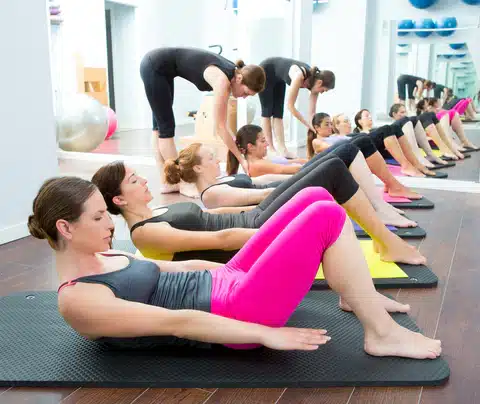No matter our age, our background or our professional situation, we can all suffer from urinary incontinence. While the risk of incontinence increases with age, it doesn’t occur only in older people. It can happen at any time of life and it can be a frustrating and embarrassing condition to deal with.

Incontinence Statistics in Australia
The statistics regarding incontinence might surprise you!
Urinary Incontinence
- Urinary incontinence affects up to 13% of men and up to 37% of women
- 30% of men and 65% of women in a GP waiting room report some kind of urinary incontinence
- Only 31% of these people will seek help for their incontinence
- In fact, 70% of people with urine leakage do not seek advice or treatment for their condition
- In a 3-month period up to 50% of women between 45-59 experience some degree of incontinence
- The prevalence of urge incontinence is strongly associated with prostate disease
- It is fairly low in younger men but increases to 30% for those aged between 70-84, and 50% for those over 85 years old
Faecal Incontinence
- This form of incontinence affects up to 20% of Australian men and up to 12.9% of Australian women
Incontinence in the Elderly
- Faecal incontinence is on the three major causes for admittance into a residential care facility
- Up to 77% of nursing home residents in Australia are affected by incontinence
- 40-60% of people in nursing homes will wet the bed tonight

What Factors Influence Incontinence?
There are a range of different factors throughout our lives that can contribute to bladder weakness. These include:
Pregnancy
Pregnancy can interfere with the way your urethra normally relaxes and contracts. Further, hormone changes during pregnancy, as well as added pressure on the bladder from the uterus, can cause stress incontinence. When you have stress incontinence you can urinate when you sneeze, cough or laugh, as well as walking, running or exercising.
Childbirth
Also known as postpartum urinary incontinence, involuntary leakage after childbirth can occur when laughing, coughing, sneezing, or performing a strenuous activity. More than a third of new mothers will experience incontinence.
This is due to the fact that the muscles around the bladder and pelvis are weakened from delivery. This makes it harder to control the flow of urine. Further, as your uterus shrinks in the weeks following childbirth, it sits directly on the bladder. This compresses the bladder and makes it difficult to stem the flow of urine. Hormone changes can also occur during and after pregnancy.
Sport
Known as athletic incontinence, this specific form of urinary incontinence results from engaging in high-impact or strenuous activities. Unlike stress incontinence, athletic incontinence occurs exclusively during exercise.
It is thought to be the result of decreased structural support of the pelvic floor due to increased abdominal pressure during high impact exercise. As a result, it is recommended that you ensure you practice pelvic floor exercises, in conjunction with your normal sport, to prevent weakening of the pelvis.
Menopause
The reduced levels of estrogen start around menopause, which can cause a thinning of the lining of the urethra. Further, the surrounding pelvic muscles also may weaken with age, which is known as pelvic relaxation. Women in midlife and beyond are at increased risk of urinary incontinence. This risk raises if the woman has delivered children vaginally. While urinary incontinence is common during perimenopause and beyond, it is not an inevitable part of aging. It should not be considered normal or accepted.

What is the Link Between Incontinence and the Pelvic Floor?
Whether you suffer from urinary or faecal incontinence, it is a very frequent pathology. It affects 1 in 4 women in Australia. Urinary incontinence involves involuntary urine leaks and is often due to the pelvic floor loosening or weakening.
A weakened pelvic floor can also be the source of faecal incontinence. This leads to the inability to hold back urine or faecal matter before reaching the bathroom.

How Can I Improve My Pelvic Floor?
By now, you have probably heard of pelvic floor exercises. Also known as Kegels, these exercises help you tighten up or contract your pelvic floor muscles. This helps strengthen them and prevent incontinence or improve your symptoms. In some cases, it might even reverse them.
If you suffer from urge incontinence, and don’t feel you can get to a bathroom in time, stop and perform a Kegel exercise. Wait until the urgency subsides before going to the bathroom. If you try to make it to the bathroom without doing an exercise, you will likely not make it without a leakage. While improving bladder and pelvic floor control can take months to see improvement, it is worth it in the long run.
Suffering from stress incontinence? Kegel exercises can also help. When it comes to stress incontinence the key is perform a Kegel exercise before pressure hits the bladder. This means, if you are about to sneeze, you should perform the exercise right as you inhale. This will help you stop a leak during the exertion of sneezing. Like urge incontinence, it takes practice but you will see the difference I the long run.
Need help managing your incontinence? Holistic Incontinence has a wide range of products available to help you stay leak free. We also have accessories for furniture and skin health. Explore the range today or contact our helpful support team to find out what product is right for you!
